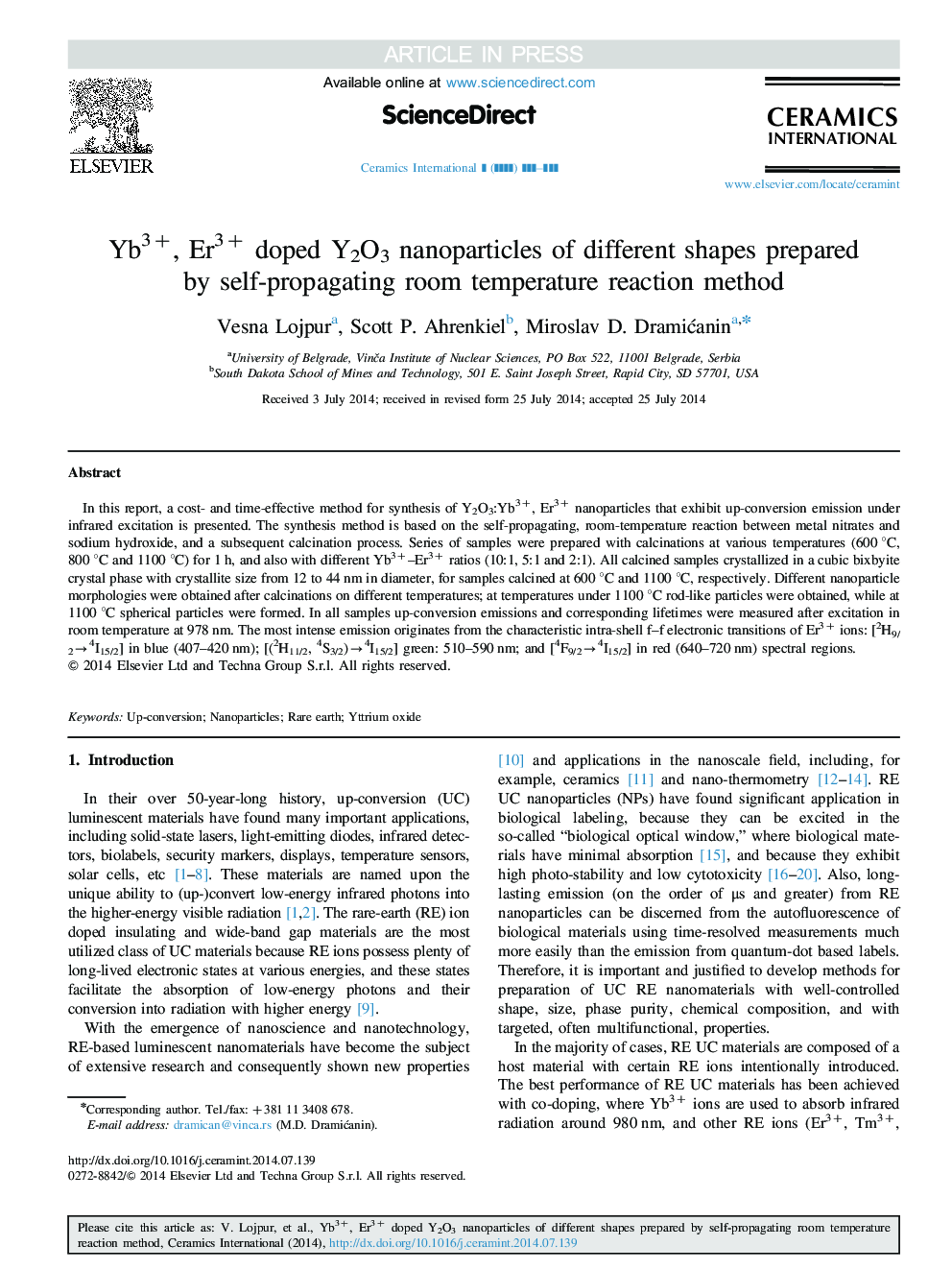| Article ID | Journal | Published Year | Pages | File Type |
|---|---|---|---|---|
| 10624931 | Ceramics International | 2014 | 7 Pages |
Abstract
In this report, a cost- and time-effective method for synthesis of Y2O3:Yb3+, Er3+ nanoparticles that exhibit up-conversion emission under infrared excitation is presented. The synthesis method is based on the self-propagating, room-temperature reaction between metal nitrates and sodium hydroxide, and a subsequent calcination process. Series of samples were prepared with calcinations at various temperatures (600 °C, 800 °C and 1100 °C) for 1 h, and also with different Yb3+-Er3+ ratios (10:1, 5:1 and 2:1). All calcined samples crystallized in a cubic bixbyite crystal phase with crystallite size from 12 to 44 nm in diameter, for samples calcined at 600 °C and 1100 °C, respectively. Different nanoparticle morphologies were obtained after calcinations on different temperatures; at temperatures under 1100 °C rod-like particles were obtained, while at 1100 °C spherical particles were formed. In all samples up-conversion emissions and corresponding lifetimes were measured after excitation in room temperature at 978 nm. The most intense emission originates from the characteristic intra-shell f-f electronic transitions of Er3+ ions: [2H9/2â4I15/2] in blue (407-420 nm); [(2H11/2, 4S3/2)â4I15/2] green: 510-590 nm; and [4F9/2â4I15/2] in red (640-720 nm) spectral regions.
Related Topics
Physical Sciences and Engineering
Materials Science
Ceramics and Composites
Authors
Vesna Lojpur, Scott P. Ahrenkiel, Miroslav D. DramiÄanin,
